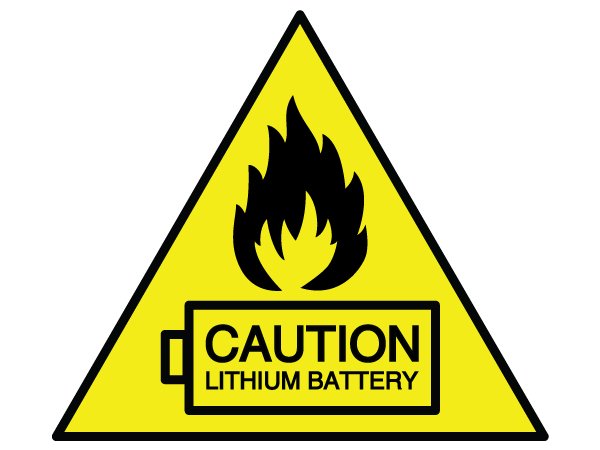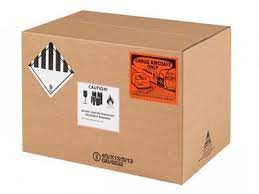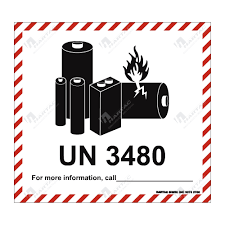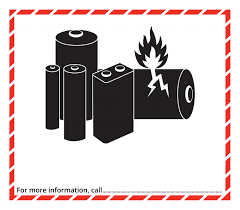When shipping lithium batteries
Speaking of dangerous goods, when we shipping lithium batteries, we also encounter dangerous goods. So why is shipping lithium batteries dangerous? Lithium batteries are very common in many of our favorite devices, including cell phones, laptops, digital tablets and notebooks, smart watches, cameras, e-bikes, and electric cars—to name a few. However, lithium-ion batteries are extremely sensitive to high temperatures and are inherently flammable. These battery packs tend to degrade much faster than normal due to heat. If a lithium-ion battery pack fails, it can catch fire and cause extensive damage. This requires immediate action and guidance on battery safety.

Here are some reasons for the lithium batteries dangerous:
Manufacturing defects
Defects in production can cause metal particles (impurities) to seep into lithium-ion batteries during manufacturing. Battery manufacturers need to ensure strict control of the clean rooms in which batteries are made.
Another defect may be the thinning of the partitions, which can be harmful in practice. Cells should undergo rigorous quality control tests and validation before they are sold.
Design defects
Car companies want to design their cars to be sleek and slim, while offering maximum range and performance. These requirements have prompted battery pack manufacturers to create compact designs by packaging high-capacity cells into smaller bodies, confounding otherwise well-made batteries.
Compromises to the design may damage the electrode or diaphragm. Any one of these could cause a short circuit. In addition, the lack of a proper cooling system or air vents can cause battery temperatures to rise as flammable electrolytes heat up.
If left unchecked, it can lead to a chain reaction of battery failures, causing the battery temperature to rise further and run out of control.
Abnormal or improper use
External factors such as keeping the battery very close to a heat source or fire can cause the battery to explode. Intentionally or accidentally puncturing a battery pack will inevitably cause a short circuit and battery fire. That’s why unauthorized removal of battery packs in electric cars can result in warranty lapses.
Users are advised to check and repair batteries only from the vehicle manufacturer’s authorized service center. Even high voltage charging or excessive battery discharge can damage it.
Charger problem
Using a poorly insulated charger can damage the battery. If the charger shorts or heats up near the battery, it may cause enough damage to fail.
While lithium-ion batteries have built-in protection against overcharging, using unofficial chargers can damage the battery in the long run.
Inferior components
In addition to manufacturing defects, the use of inferior components is one of the highest causes of battery failure. Increasing competition is driving down battery prices, causing battery makers to cut corners where they shouldn’t. By ignoring poor electronics such as battery management systems, the risk of battery failure increases.

Battery management systems are critical to battery safety and performance
It prevents the battery pack from operating outside its safe operating area. Since batteries are a high-value component of electric vehicles or energy storage systems, it is essential to invest in smart battery management systems that can immediately detect battery failures and prevent batteries from exploding.
The International Air Transport Association (IATA) has a provision in its Dangerous Goods regulations that relates to lithium batteries carried by passengers in their personal electronic devices (PED).
These regulations do allow you to carry lithium batteries on airplanes, but they limit these to 15 PEDs. Wow, 15 PEDs, you’ll never have that much equipment on you, will you? Please be careful and look again. It was hard for me to believe this rule when it first appeared, but I took a moment to go through my belongings.
So far, manufacturers have come up with a design that would include a lithium battery fire inside the package so it doesn’t spread and cause additional damage.
While lithium-ion batteries can be dangerous in the event of an uncontrolled thermal runaway reaction, these accidents are the exception. In commercial shipping today, the industry is doing everything possible to transport these batteries in a safe and reliable manner. We can do our part to reduce or eliminate risks during travel, ensure we comply with airline requirements, and ensure that the equipment we carry with us is in good condition and not damaged or compromised.

Here are some regulations lithium batteries and the shipping of batteries
Important international regulations on the transport of dangerous goods:
ADR – Agreement on the International Transport of Dangerous Goods by Road;
IATA Dangerous Goods Regulation (DGR) for Air Cargo;
IMDG Code – International Maritime Dangerous Goods Code;
RID – Regulation on the carriage of dangerous goods by international rail.
Do I have to list a label when shipping lithium batteries
Depending on the mode of shipping of lithium batteries, corresponding regulations must be followed. Lithium batteries and batteries are classified as category 9 dangerous goods (miscellaneous hazardous materials).
UN 3090: Lithium metal battery
UN 3091: Lithium metal batteries contained in equipment or equipment, Lithium metal batteries packaged with equipment
UN 3480: Lithium ion batteries (including lithium ion polymer batteries)
UN 3481: Lithium ion batteries (including lithium ion polymer batteries) in equipment or Lithium ion batteries (including lithium ion polymer batteries) packaged with equipment
UN 3171: Battery powered vehicles or battery powered equipment.

Conclusion:
The above-mentioned is a brief introduction of the why lithium battery is considered as Dangerous goods. We need to deal with it in consistent with the regulation so as to keep it safe in use and transport.

